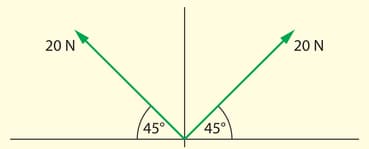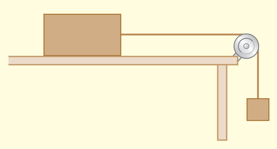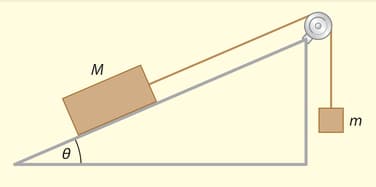K A Tsokos Solutions for Chapter: Mechanics, Exercise 2: Test yourself
K A Tsokos Physics Solutions for Exercise - K A Tsokos Solutions for Chapter: Mechanics, Exercise 2: Test yourself
Attempt the practice questions on Chapter 2: Mechanics, Exercise 2: Test yourself with hints and solutions to strengthen your understanding. Physics for the IB Diploma 6th Edition solutions are prepared by Experienced Embibe Experts.
Questions from K A Tsokos Solutions for Chapter: Mechanics, Exercise 2: Test yourself with Hints & Solutions
Find the magnitude and direction of the net force in the diagram.

Explain why is it impossible for a mass to hang attached to two horizontal strings as shown in the diagram.

A mass of rests on a rough horizontal table. The coefficient of static friction between the block and the table is . The block is attached to a hanging mass by a string that goes over a smooth pulley, as shown in the diagram. Determine the largest mass that can hang in this way without forcing the block to slide.

A girl tries to lift a suitcase of weight by pulling upwards on it with a force of . The suitcase does not move. Calculate the reaction force from the floor on the suitcase.
A block of mass rests on a horizontal table. A force of is applied vertically downward on the block. Calculate the force that the block exerts on the table.
A block of mass is connected with a string to a smaller block of mass . The big block is resting on a smooth inclined plane as shown in the diagram. Determine the angle of the plane in terms of and in order to have equilibrium.

Describe under what circumstances a constant force would result in an increasing acceleration on a body and a decreasing acceleration on a body.
A car of mass is on a muddy road. If the force from the engine pushing the car forward exceeds , the wheels slip (i.e. they rotate without rolling). Estimate the car’s maximum acceleration on this road.
